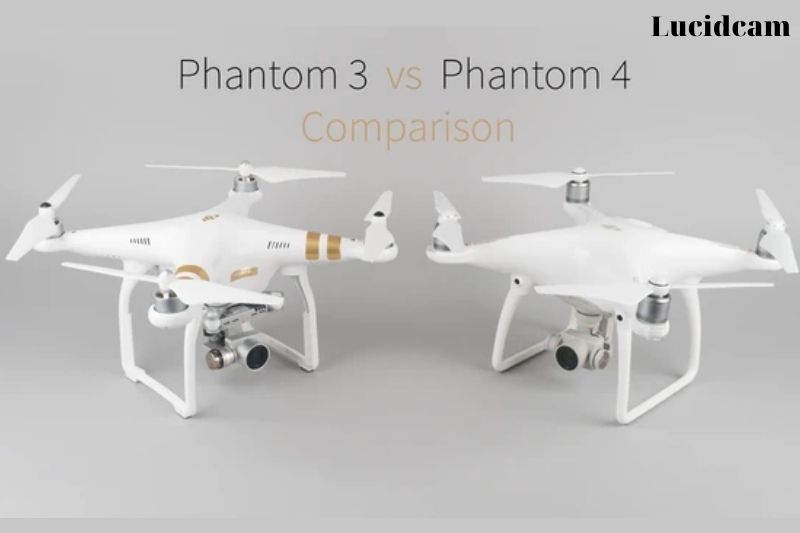DJI is a Chinese technology company, manufactures unmanned aerial vehicles (UAV), also known as drones, for aerial photography, videography, gimbals, flight platform, camera, propulsion systems, camera stabilizers, and flight controllers. This review will compare the Phantom 3 and Phantom 4 DJI drones to help you decide which one suits your needs best. It also explains why these are the best consumer drones.
Table of Contents
DJI Phantom 3 Vs 4
DJI Phantom 3
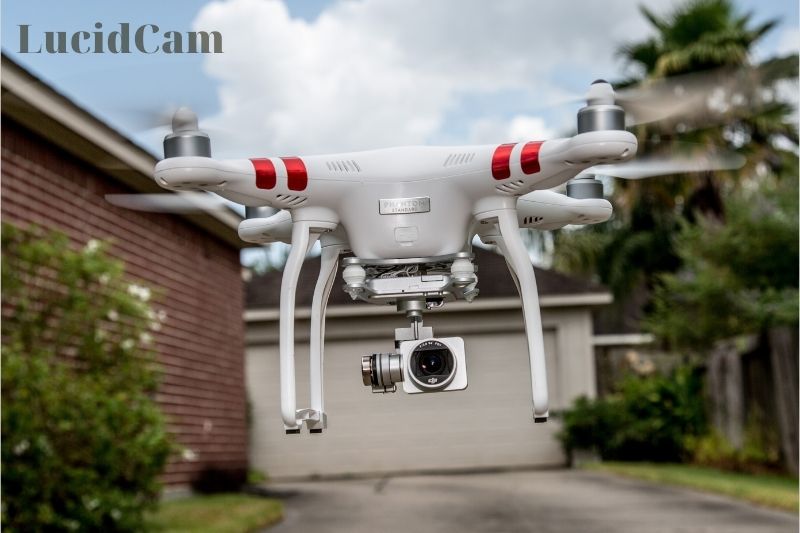
DJI is a leader in the consumer drone market and continues to be accessible and simple to use. Phantom 3 Pro comes with a 4K camera, while the Phantom 3 standard model has a 1080p/FullHD video camera. The Phantom 3 is almost identical to the Phantom 2, with a few minor improvements.
It has a new motor tilt that provides better stability and smart braking, as well as a completely new flight controller. The exterior design is still sleek and white, but the landing gear is wider. Advanced versions offer a better camera and longer battery life than the standard version.
Pros
- Excellent video quality
- Simple to use
- It has a good battery life for its class
- A great app with many useful features
- Less expensive
Cons
- Does not have advanced flying modes
- The design needs to be updated
DJI Phantom 4
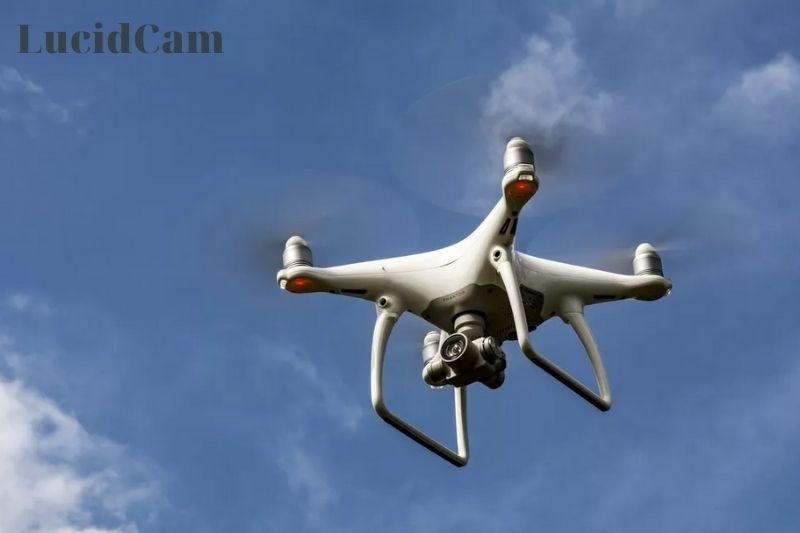
The Phantom series drones are amongst the most popular consumer drones on the market. The New Phantom 4 improves on the design of its predecessors by using a sleeker, more modern chassis. The Phantom4 includes all of the popular features from the Phantom 3 plus more.
The safety system stops the drone if it sees an obstruction ahead. It also has a longer battery life, better signal range, a better gimbal, and a faster speed. Although the Phantom4 is more expensive than the Phantom3, it offers premium features that are well worth the cost.
Pros
- It’s easy to fly
- Extremely stable
- Obstacle avoidance
- Amazing operating range with 720p LiveView
- *Safety features such as return-to-home and other safety measures
- Automated flight mode. High-speed sport mode. Smooth 4K video capture. 20mm wide-angle lens.
- Subject recognition and tracking. Raw and JPG still capture
- Max FPV Preview Quality: HD 720P @ 30fps (depending on conditions and mobile device)
- Vision Positioning Module: Visual Positioning System uses four optical sensors and two ultrasonic sensors for position holding without GPS.
- Sprot mode
Cons
- Expensive
- Mission planning is only possible with a third-party app
- Battery and bug issues need to be fixed
DJI Phantom 3 vs 4 – Design
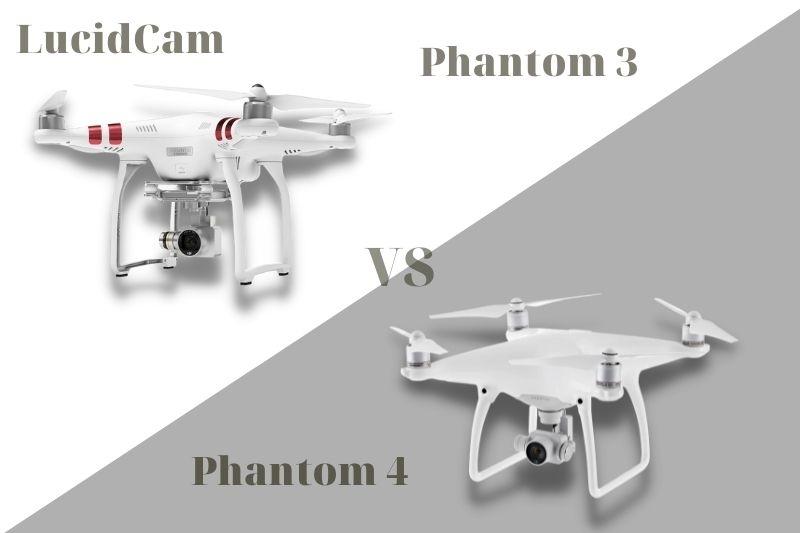
If you’re examining Phantom 3 and Phantom 4 from a design perspective, you won’t see much difference.
Both devices come with white designs and four propellers on top. Their cameras hover below the drones and can capture stills and video all around.
The DJI Phantom 3 and 4 are two popular drones that have been widely used for aerial photography and videography. While they share some similarities in terms of design, there are also notable differences between the two models.
The Phantom 3 has a clean and functional design, with a white plastic case that gives it an Apple-like appearance. The drone’s central body houses the electronics and battery, while the motor is at the end of four protruding shafts.
The landing gear is located at the bottom of the case, with the camera and gimbal positioned between the landing arms. Rubber joints connect the drone’s body to the gimbal to prevent vibrations, and the gimbal can rotate, pan, and tilt the small HD camera.
The drone’s microSD card slot is located on top of the camera housing, and the battery is secured in place by sliding into the cavity at the back of the drone’s body. The Phantom 3’s design is lightweight and easy to transport, making it ideal for on-the-go shooting.
The Phantom 4 retains a similar footprint and design to its predecessor, the Phantom 3. However, the Phantom 4’s white plastic shell has been simplified to enhance its aerodynamics and appearance. The drone measures 7 by 11.5 by 111.5 inches (HWD) and weighs 3 lbs.
The Phantom 4 comes with a compact and functional case that can hold the drone, remote, charger, propellers, and two spare batteries. The drone’s redesigned gimbal has a flexible shock mount that secures the camera to its right and left sides, and the drone can tilt up or down with some left and right movement.
Two compass modules and dual Inertial Measurement Units (IMUs) are included on the Phantom 4, allowing for better flight accuracy and efficiency. The drone’s upgraded motors increase cooling efficiency and allow the propellers to be raised to prevent them from appearing in the footage.
The micro USB port and microSD card slot are now part of the Phantom 4’s chassis, making them more accessible.
Overall, while the Phantom 3 has a simpler design and is more lightweight, the Phantom 4’s design improvements make it a more advanced and efficient drone for aerial photography and videography. The Phantom 4’s streamlined white plastic shell, flexible shock mount, and improved camera attachment point enhance the quality of the footage captured by the drone.
Additionally, the Phantom 4’s dual compass modules and dual IMUs, along with its upgraded motors, provide better flight accuracy and efficiency. The Phantom 4’s compact and functional case is also a convenient way to transport the drone and its accessories.
It’s easy to use
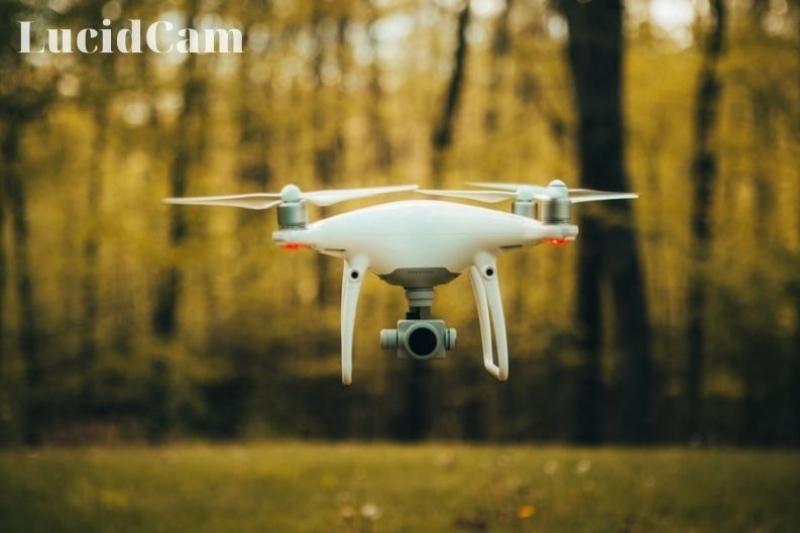
After downloading the software update to set up the 3 Standard, the files were transferred to the drone. It was quite simple and only took a few seconds.
Phantom 3 is one of the phantom series. The controller for the 3 Standard has the same design as all the Phantom controllers. We enjoyed the controller but found it less intuitive than the Phantom controllers. The 3 Standard controllers scored slightly lower on ease-of-use than their Phantom counterparts. The joysticks are a bit more sticky than the Phantom, but they are still large and well-textured.
A spring-loaded clip has replaced the lockable phone cradle, making it much more difficult to use. These are minor issues that cannot be seen side by side. We wish DJI had used a similar controller to the Phantom 3 Standard.
The Phantom 3 Standard drone is great. You can lift the drone from the ground by using the controls on the screen. You can fully control the drone once it is hovering. The joysticks may feel a little sticky at first, but once you get used to them, your fear will disappear.
You can quickly start or stop the cameras by pressing the large button on your phone’s screen. You can bring the drone back using the auto-land function. The auto-land feature gently touches the drone in a controlled manner.
Battery Life
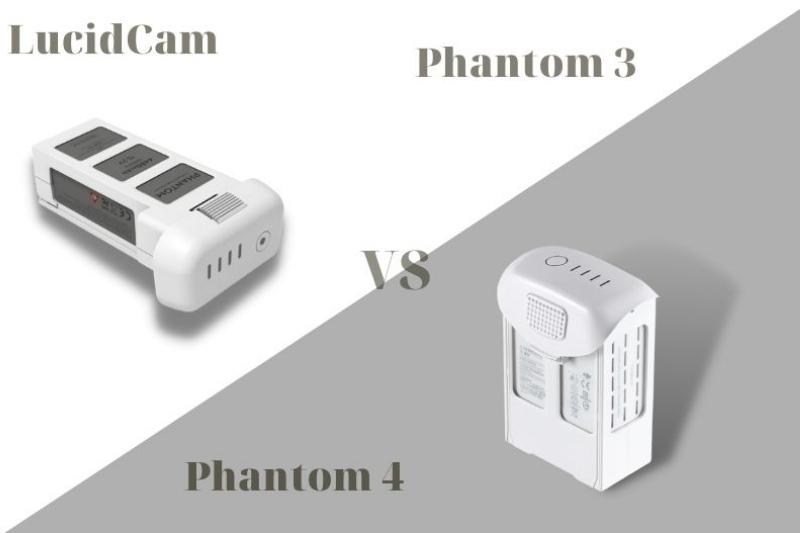
The DJI Phantom 3 and 4 are two popular drone models that are known for their impressive aerial photography and videography capabilities. One important aspect to consider when comparing these two drones is their battery life.
The Phantom 3 Standard comes with a 4480-mAh single battery that provides around 21 minutes of flight time. This is about the same as the Yuneec Q500 drone, which comes with two batteries. Charging the Phantom 3 Standard battery with the supplied charger takes approximately 50 minutes.
However, spare batteries for the Phantom 3 Standard can be expensive, with DJI selling them for $145 each. To help with the charging process, DJI also offers a charging station that costs $90.
In comparison, the Phantom 4 comes with a larger capacity battery that is rated at 81.3WH and 5,350mA. This Intelligent Flight Battery provides a flight time of up to 28 minutes, although this is an optimistic estimate.
When the battery drops to around 10%, the drone will automatically land as a safety feature. On average, users can expect to fly for around 23 minutes, which is a significant improvement over the 19 minutes provided by the Phantom 3 models. The battery takes around an hour to fully charge.
Overall, the Phantom 4’s larger battery capacity and longer flight time make it a better choice for users who require extended flight times for their aerial photography and videography needs. While the Phantom 3 Standard’s battery life is still decent, the Phantom 4’s battery life improvement is significant and can save users time and money in the long run.
Camera Quality
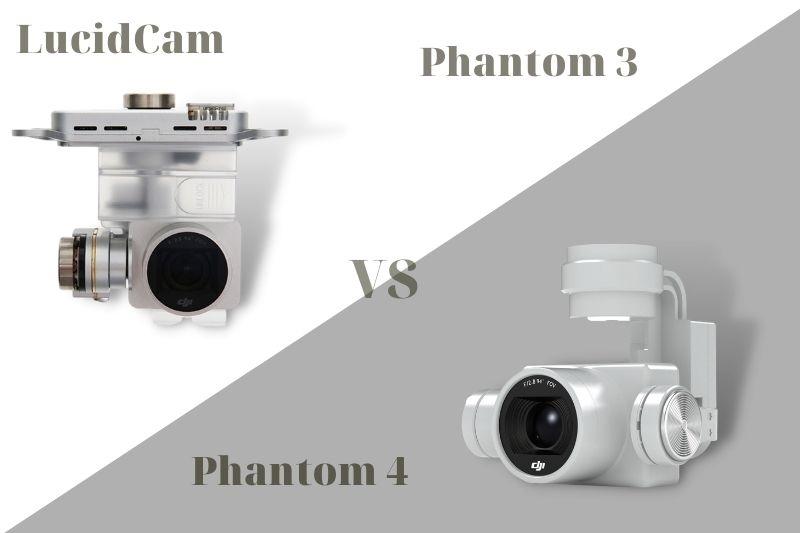
Let’s now compare the DJI Phantom 4 and the Phantom 3 in terms camera specifications. The sensor used in the Phantom 3 was either the Sony Exmor R BSI 1/2.3″ Effective pixels 12.4M (Total pixels 12.76M), on the Advanced and Phantom 3 Professional, or the Panasonic Smart FSI1/2.3″, on the Standard.
The sensor in the Phantom 4 is not branded. We speculate that DJI is trying to position itself in the optics and drone markets by removing the cameras from the new stock.
You will want to get the best out of your drone’s aerial photography possibilities, regardless of whether you are a professional photographer or a novice. Camera specs are important. High megapixel rates make for great photos. While 4K streaming at high frames rate allows for HD video capture, the best HD video.
Video
[amazon table=”2669″]The DJI Phantom 4 is a powerful video camera. The Phantom 4 can record up to 4K video at 24 frames per second and has a maximum video bitrate of 60Mbps. It has an ISO range of 100 to 3200 and a 94-degree field of view.
The Phantom3 can record up to 2.5K at 24 frames per second and has a 40Mbps bitrate. The Phantom 3’s ISO range can be set to 100 to 3200. If you want a solid field of view, the 94-degree option is an excellent choice. The Phantom 3 is still missing 4K.
Photo
The 12-megapixel sensor in the Phantom 4’s camera is capable of capturing photos at ISO 100 to 1600. You can choose between single-shot and burst mode, as well as auto exposure bracketing and EV bias, and time-lapse. HDR support will make your photos look amazing. The Phantom4 can save photos as JPEG (RAW) or DNG (DNG).
The Phantom3 also has a 12-megapixel sensor. Its ISO range is 100 to 1600. Although the cameras can shoot in single shots, bursts, auto exposure, and time-lapse modes, it does not support HDR like Phantom 4. However, it will save your photos in JPED or DNG (RAW).
Phantom 4 camera is way better than that of Phantom 3. It has a 12MP camera and 4K video compared to 2.7 K for Phantom 3. Phantom 4 takes way better photographs and videos than Phantom 3. Phantom 4 has a better signal range of 3 Miles, while Phantom 3 range is only a mile. Fitted with an eight-element lens and some nifty sensor mods, Phantom 4 is able to produce a more dynamic range of colors and saturation than Phantom 3.
Flight Time
While the Phantom3 had a maximum speed of 57 kilometers per hour, the Phantom4 can now fly at 72 kilometers per hour. The Phantom 4 also has up to 20% longer battery life with a maximum flight time of 28 minutes versus about 23 minutes of flight time for the Phantom 3.
Intelligent Flight Modes
There are many intelligent flight modes for each drone that can be controlled with the DJI App. These modes include:
- Follow me: Instructions the drone to follow the operator.
- Waypoints: This allows users to create waypoints that allow the drone to fly automatically.
- Course Lock: Controls are adjusted to the drone’s flight direction
- The drone will then continue to circle around the point of interest. The drone will continue to circle around the area.
- Mode for beginners: Limits flight speed & distance.
Two new flight modes are available with the Phantom 4, which use optical sensing technology.
Active Track allows you to track a subject automatically. The drone can recognize your subject and follow them naturally. It also keeps them in the frame. No GPS bracelet, tracker, or beacon is required.
TapFly mode allows you to simply tap on the live view of your smart device screen and send it flying in that direction. You can easily watch your drone fly with Obstacle avoidance Systems.
Obstacle Avoidance
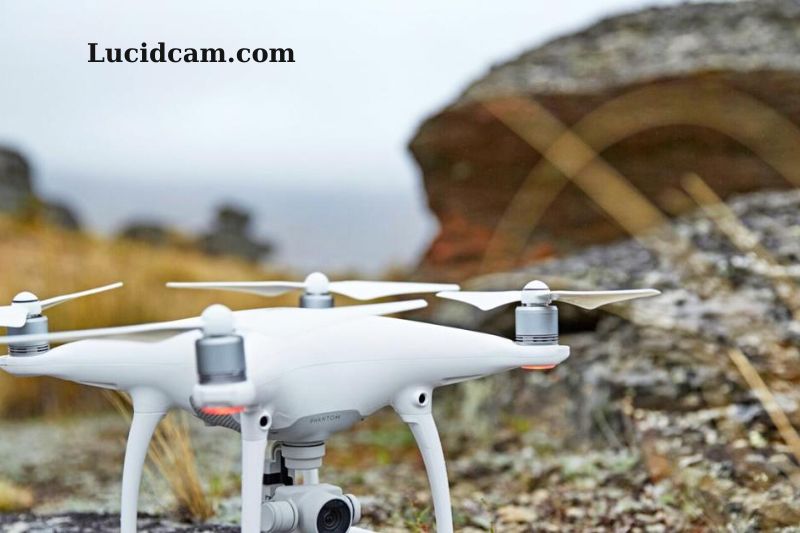
Obstacle avoidance is one of the most significant differences between the DJI Phantom 3 and Phantom 4 drones. The Phantom 3 features two cameras, one for video capture and one for stabilization.
On the other hand, the Phantom 4 has three additional cameras that provide enhanced stabilization and obstacle avoidance capabilities. This feature is particularly beneficial for novice pilots who are concerned about crashing on their first drone flight, as it can help prevent collisions and minimize potential damage.
The Phantom 4’s Active Obstacle Sensing System is a major upgrade compared to the Phantom 3. This system uses advanced computer vision and processing in combination with front obstacle sensors to allow the drone to detect and avoid obstacles in its path.
This means that the Phantom 4 can reach speeds of up to 4 meters per second faster than its predecessor, while still maintaining its ability to detect and respond to obstacles.
The obstacle detection range of the Phantom 4 is impressive, with the drone able to detect obstacles from a range of 0.7 to 15 meters or 2 to 49 feet. This range is much wider than the range of the Phantom 3, which did not have obstacle avoidance capabilities.
The Phantom 4’s obstacle avoidance system is a significant upgrade that provides pilots with greater confidence and control over their flights. With the added sensors and advanced computer vision, the Phantom 4 can navigate more complex environments and provide pilots with greater flexibility in their aerial photography and videography.
It is important to note, however, that the obstacle avoidance system is not foolproof, and pilots should still exercise caution and follow safe flying practices.
Remote control
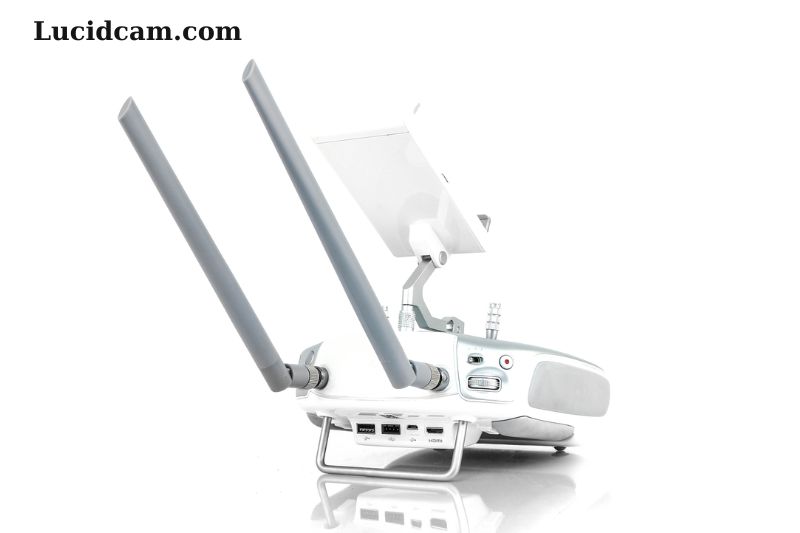
The DJI Phantom series has become a popular choice for hobbyists and professional photographers/videographers due to its advanced features and ease of use. The DJI Phantom 3 and 4 models have both made significant improvements to their remote control design compared to their predecessors, making them even more convenient to use.
The DJI Phantom 3 remote control has a sleek design with a comfortable grip, making it easy to handle during flights. It features a built-in rechargeable battery that can last for up to 4 hours, which is more than enough time for most drone pilots.
The remote also includes a micro USB port, allowing users to charge their mobile devices while flying the drone. The DJI Phantom 3 remote control includes a variety of buttons and knobs, including a camera button, which can take photos or start and stop video recordings.
Additionally, the remote control comes with a range extender, which can increase the range of the drone to over 3 miles.
The DJI Phantom 4 remote control, on the other hand, takes things to the next level. The remote features a sleeker design and an ergonomic grip that fits comfortably in the user’s hand. The DJI Phantom 4 remote control has a rechargeable battery that can last up to 5 hours, which is longer than the DJI Phantom 3’s battery life.
The remote control also includes a built-in screen, eliminating the need for users to connect their mobile devices to the remote. The screen displays a live feed from the drone’s camera, allowing users to see what the drone is recording in real time.
The DJI Phantom 4 remote control also includes a new obstacle avoidance feature, allowing the drone to avoid obstacles in its path automatically.
In conclusion, both the DJI Phantom 3 and 4 remote controls are excellent choices for drone enthusiasts. The DJI Phantom 4 remote control comes with additional features and improvements over the Phantom 3’s remote, including longer battery life, a built-in screen, and obstacle avoidance capabilities.
However, the DJI Phantom 3’s remote control is still a great option and may be more affordable for those on a budget. Ultimately, the choice between the DJI Phantom 3 and 4 remote control will depend on your individual needs and preferences.
Satellite Positioning
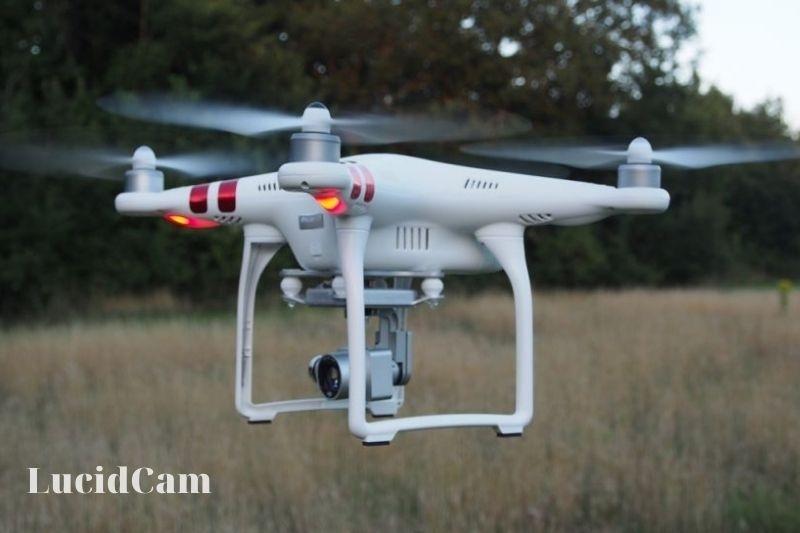
Except for the Phantom 3 Standard, all drones come with GPS and GLONASS positioning. They can connect to as many satellites as possible (both American and Russian) and pinpoint their exact location with the greatest accuracy.
Visual Positioning
The Phantom 3 Standard does not have a vision positioning system, but it is available on all models. It uses an ultrasonic and infrared sensor that accurately determines the drone’s position low to the ground. This allows it to hover in place much more accurately than GPS alone. Vertical and horizontal displacement is significantly reduced.
Wobbly Horizons
The Phantom range has a much more powerful camera. The Phantom 3 range has been updated to fix some key issues. Wobbly horizons were a major issue in the footage. It sounds exactly like it is: curving and crooked horizons. The Phantom 4’s camera has solved this problem.
Subject Tracking
![]()
The Phantom 3 allows you to take almost all moving shots by moving the sticks on your controller manually. This is a difficult thing for new pilots, especially if they want to track moving subject without making jerky movements. The Phantom four now has Tap Flight and active track.
The active track allows you to select the subject you want to track, and it will lock onto it and begin tracking it. This feature is not available in Phantom 3’s Follow Me function. Instead of following a GPS signal, it uses machine learning algorithms to visual track the subject.
Tap fly is another feature that’s aimed at beginners. You can glide smoothly to different places by simply tapping the desired location on your screen.
Conclusion
When it comes to drones, DJI is one of the most popular brands. The company has released two new models in 2017 that are geared toward different purposes, and now people have a difficult choice between which model they should buy. While there are many differences between both models, here we’ll focus on their similarities and what you need to know before choosing your first drone purchase.
In this article, LucidCam has compared some of the key features for each drone so that you can make a decision about buying the best drones suited for your needs. We hope you find this article helpful!
